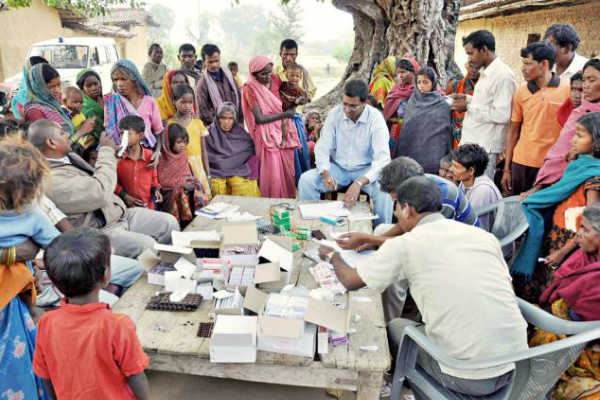Healthcare Facilities in Rural Areas: The Indian government has designated 112 Aspirational Districts based on their performance in 49 Key Performance Indicators (KPIs) spanning five themes: health and nutrition, education, agriculture, and water resources, financial inclusion and skill development, and basic infrastructure.
Because “Public Health and Hospital” is a state subject, the state/UT governments bear primary responsibility for ensuring the availability of healthcare facilities. Through central and state-level monitoring mechanisms, the government examines the functionality of health centers as well as the implementation of various health programs in each state, including the Aspirational District areas (Rural Districts). The Ministry of Health and Family Welfare conducts annual Common Review Missions (CRM) and Integrated Monitoring Visits (IMV) to assess the implementation of the National Health Mission (NHM) at the national level. Furthermore, States update their Health Management Information System (HMIS) data, which is disaggregated down to the healthcare facilities level. Similarly, NITI Aayog conducts aspirational district evaluations based on set indicators.
From 2007 onwards, the reports of the CRM and performance evaluation of healthcare facilities can be found at https://nhsrcindia.org/php-crm-reports. Similarly, the annual report for the Aspirational district can be found at https://www.niti.gov.in/annual-reports.
The proposals are received in the form of Programme Implementation Plans (PIPs) under the National Health Mission (NHM), and the Government of India approves them in the form of Record of Proceedings (RoP) based on available resources.
Schemes aimed to provide healthcare facilities to the general public
The following are the main schemes aimed at closing the gap in providing health services to the general public:
With a budget of Rs. 64,180 crores, the PM Ayushman Bharat Health Infrastructure Mission (PM-ABHIM) aims to fill critical gaps in public health infrastructure. It is a Centrally Sponsored Scheme with some components from the Central Sector. Sub-Health Centres, Urban Health and Wellness Centres, Block Public Health Units, Integrated District Public Health Laboratories, and Critical Care Hospital Blocks are among the infrastructure development components of the Centrally Sponsored Scheme (CSS).
Ayushman Bharat-Health & Wellness Centres (AB-HWCs): 1,50,000 Sub-Health Centres (SHCs) and Primary Health Centres (PHCs) in rural and urban areas are being converted into Ayushman Bharat-Health and Wellness Centres (AB-HWCs) to provide twelve packages of universal preventive, promotive, curative, palliative, and rehabilitative services. The rollout of teleconsultation services through ‘eSanjeevani’ is another critical component of AB-HWCs.
Human Resources: Providing healthcare facilities & services necessitates a significant amount of human resource input. NHM has attempted to fill the gaps in human resources by providing 14,474 GDMOs, 3,502 Specialists, 74,783 Staff Nurses, 84,313 ANMs, and 89,140 CHOs to the States on a contractual basis. 10.78 lakh ASHAs (10.08 lakhs in rural + 0.77 lakhs in urban) and 48,585 paramedics, 439 public health managers, 17,262 programme management staff, etc.
NHM has focused on multi-skilling human resources in addition to providing support for health human resources. NHM also focused on multi-skilling of doctors at state-identified strategic locations, such as hospitals. Emergency Obstetric Care (EmOC), Life-Saving Anaesthesia Skills (LSAS), and Laparoscopic Surgery are all skills taught to MBBS doctors.
Dr. Bharti Pravin Pawar, Union Minister of State for Health and Family Welfare, stated this in a written reply to the Lok Sabha on April 1st.

